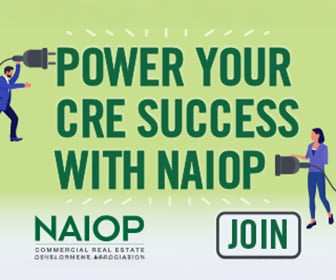Negotiating Loan Guarantees and Cost Overruns in Development Joint Venture Agreements

Real estate development joint ventures often require lengthy and complex negotiations regarding construction loan guarantees and cost overruns.
REAL ESTATE JOINT ventures (JVs) are long-standing vehicles for joining a developer’s local knowledge and operational expertise with an investor’s financial wherewithal. In the current climate of capital abundance, real estate JVs with a development and construction component have become more popular as investors seek higher returns.

Eric D. Lemont
In addition to having to negotiate all of the traditional JV hot button issues around major decisions, removal, exit rights and distributions, members of a development JV — or a real estate JV with a renovation component — must also wrestle with two additional issues that typically require lengthy negotiation: construction loan guarantees and cost overruns. (Throughout this article, the word “members” is used to refer to the parties to a JV agreement.”
Not surprisingly, the allocation of responsibility for, and treatment of, guarantees and cost overruns in joint venture agreements depend largely on the specifics of the transaction and the relative leverage and sophistication of the members. As a result, hard and fast rules are hard to come by. That being said, negotiations typically resolve themselves within a customary range of outcomes.
Guarantees
With respect to loan guarantees, the developer member or its affiliate is invariably charged with signing the nonrecourse carve out guaranty. This make sense; as the developer is usually the member charged with managing the day-to-day operations of both the JV and the property, it is in a position to commit the willful, grossly negligent or criminal actions that could potentially trigger the guaranty. If an investor member does not explicitly require that the developer member also sign on to the construction loan’s payment and completion guarantees, it will usually add language confirming that in no event will it, the investor member, serve as such a guarantor, effectively resulting in the developer signing on to such guarantees.
In exchange for its assumption of the risks associated with serving as the guarantor, some developers will seek a “guaranty fee.” This is highly negotiated and party-specific. In the relatively unusual case that it is agreed to by the investor, the fee is often in the range of 0.5 to 1.0 percent of the construction loan amount. More often, developers aim to hedge their guaranty exposure by having the venture reimburse them for any payments they may be required to make under the guarantees.
Investors often will agree to this arrangement as long as the reason for the guaranty being triggered isn’t due to the developer’s default under the JV agreement. In addition, investors very likely will require language confirming that such reimbursement be repaid solely out of the venture’s cash flow and that neither member will be required to contribute additional capital to fund such reimbursement.
Cost Overruns
As the developer is the joint venture member with responsibility for preparing the development budget, selecting the contractor and managing the project’s overall development, the investor will similarly look to the developer to fund cost overruns should a project go over budget. While it is unusual for a developer to receive capital contribution credit for its cost overrun payments, it is not uncommon to have such payments treated as a subordinated loan to the venture.
In this case, the developer receives the return of its cost overrun payments somewhere in the JV agreement’s distribution waterfall, typically after the investor and developer have received their first return hurdle but before the developer’s promote; i.e., its share of the profits above its pro rata capital interest in the venture. In some situations, developers have successfully bargained for the return not only of their cost overrun payments at par but also with agreed-upon interest.
Depending on the specifics of the deal and the applicable JV members, developers can sometimes negotiate to have their obligations to fund overruns capped at a certain fixed amount or percentage of the development budget, following which the investor is charged with funding additional cost overruns, either on its own or on a shared basis with the developer. If investors agree to this approach, they will, in many instances, cap their own maximum exposure for cost overruns at a certain amount.
Developers may hedge their exposure for overruns in other ways, most notably by arranging for a guaranteed maximum price (GMP) contract, so that the risk of overruns is shifted to the project’s contractor. Within the JV agreement itself, developers should seek to limit the definition of a cost overrun so that certain expenses are instead treated as venture expenses shared by the members.
Examples include change orders that have been approved by both JV members, tenant improvement costs and leasing commissions incurred in connection with leases approved by both members, as well as costs caused by changes in legal requirements or force majeure events — those that cannot be reasonably anticipated and therefore are outside of the members’ control. Savvy developers also make clear in the JV agreement that their obligation to fund cost overruns is subject to their rights within the agreement to first draw down on any contingency line items, and reallocate savings, in the development budget.
A member’s failure to fund a cost overrun for which it has responsibility will allow the nondefaulting member to exercise the customary remedies in a JV agreement for failure to contribute additional capital. Such remedies include the nondefaulting member funding the applicable overrun and disproportionately squeezing down the defaulting member’s percentage interest in the venture, or making a member loan to the defaulting member. That loan may be secured by the defaulting party’s membership interest in the venture. In addition, many investors require that the developer’s cost overrun obligations be guaranteed by a creditworthy individual or entity affiliated with the developer.
The above approaches to guarantees and cost overruns are illustrative and by no means exhaustive. But in the context of a negotiation where each side is seeking to minimize its risk exposure at the expense of the other, an understanding of common and counter approaches is useful. At the very least, negotiating a strong position in the joint venture agreement can play a pivotal role in providing the leverage needed to negotiate an “out of agreement” solution should a project go off track.
Eric D. Lemont, real estate partner in the Boston office of Sullivan & Worcester LLP




